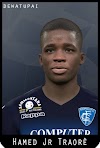This morning's "Google Alert" (I have one set up to let me know when someone has written about my blog) included a link to Scientist Gone Wordy, where Rachel (the blog owner) talked about the power of words. In her post this morning (April 2, 2010), she pointed readers to my site (hence the alert from Google Alerts).
As anyone that has heard me speak at a conference or invited lecture knows, I have uttered plenty of words that expose my own biases. Paying attention and recognizing the power in the words we use is an on-going process. I self-disclose my own ignorance and examples of offensive speech to demonstrate that I'm just like most people. There's a lot we don't know, and having it brought to our attention is unsettling and embarrassing.
I like to think of myself as being tuned in for bias in the media, but once I started reading NPR Check (now NPR Team), I realized I had not been applying my critical media skills to NPR!. I had assumed (incorrectly) that NPR was more on the liberal and progressive end of the political spectrum.
Towards the end of her post, Rachel ended by talking about gender. It reminded me of one of the findings in my doctoral dissertation. There, I examined illustrations of American Indians (actual American Indians, non-Native characters playing Indian, images on objects such as the Indian head penny) in children's books recommended in Young Children, the practitioners journal of the National Association for the Education of Young Children.
Whether it was an actual American Indian character, or a character playing Indian, or an image on an object, the majority of the images were male.
I'd need to do a study of the gender of the Native people in historical fiction in order to make a definitive statement, but thinking about classics like Little House on the Prairie or Matchlock Gun, most of the portrayals are of Native men...
Ticker
6/recent/ticker-posts
Popular Posts

How to Apply Makeup in High School?
July 20, 2022

Hamed Junior Traorè Face (Empoli) - PES 2017
October 04, 2022

Need For Speed The Run PC Full Free Version Download
June 08, 2022

Towards Tu Tap 276 Gj Johnson Electrical Fc De Kampioenen.
September 08, 2022

Apex Legends PC highly compressed (699 MB100% working)
June 07, 2022
Random Posts
5/random/post-list
Popular Posts

How to Apply Makeup in High School?
July 20, 2022

Hamed Junior Traorè Face (Empoli) - PES 2017
October 04, 2022
Menu Footer Widget
Copyright ©
antilat



0 Comments